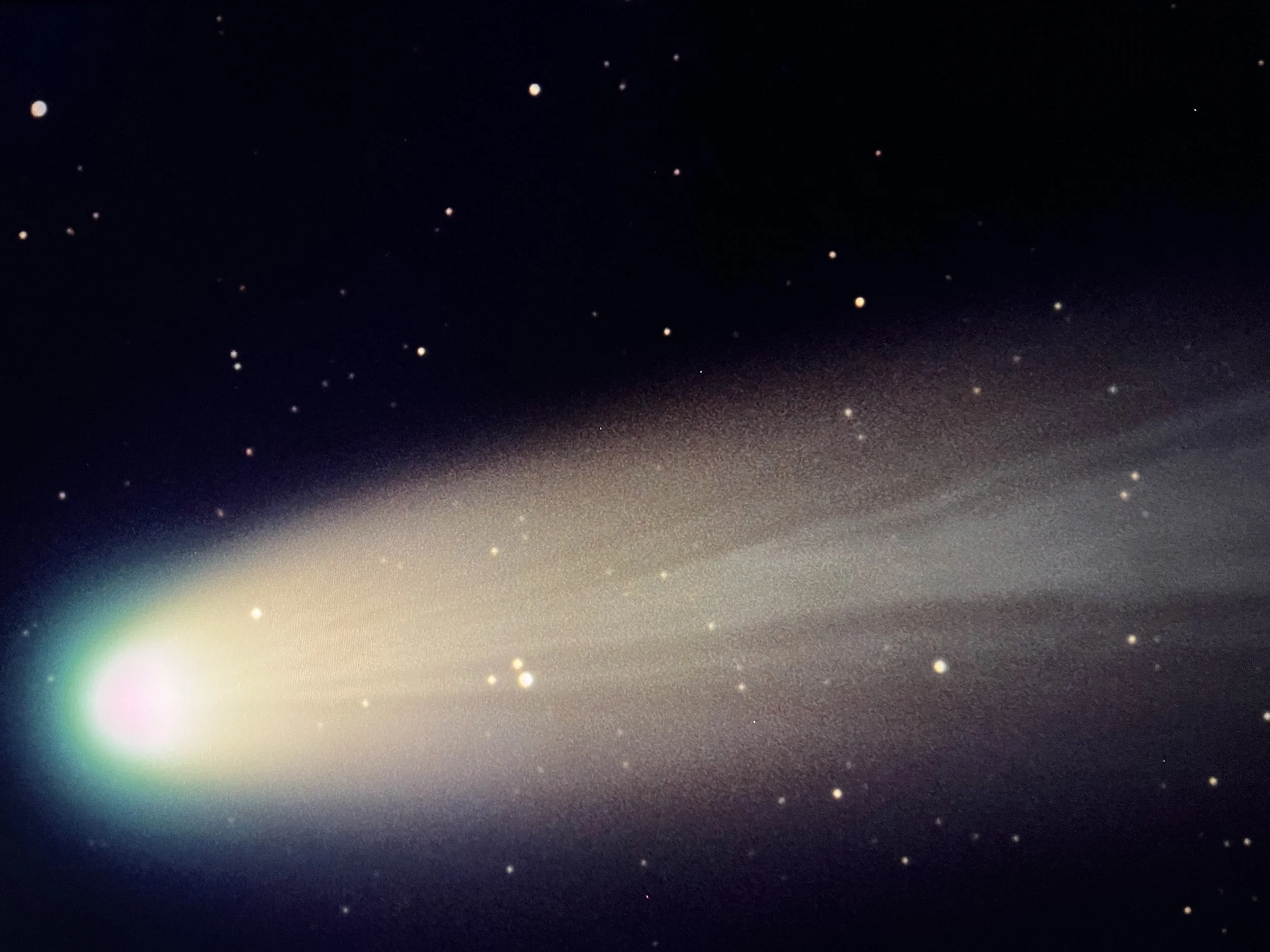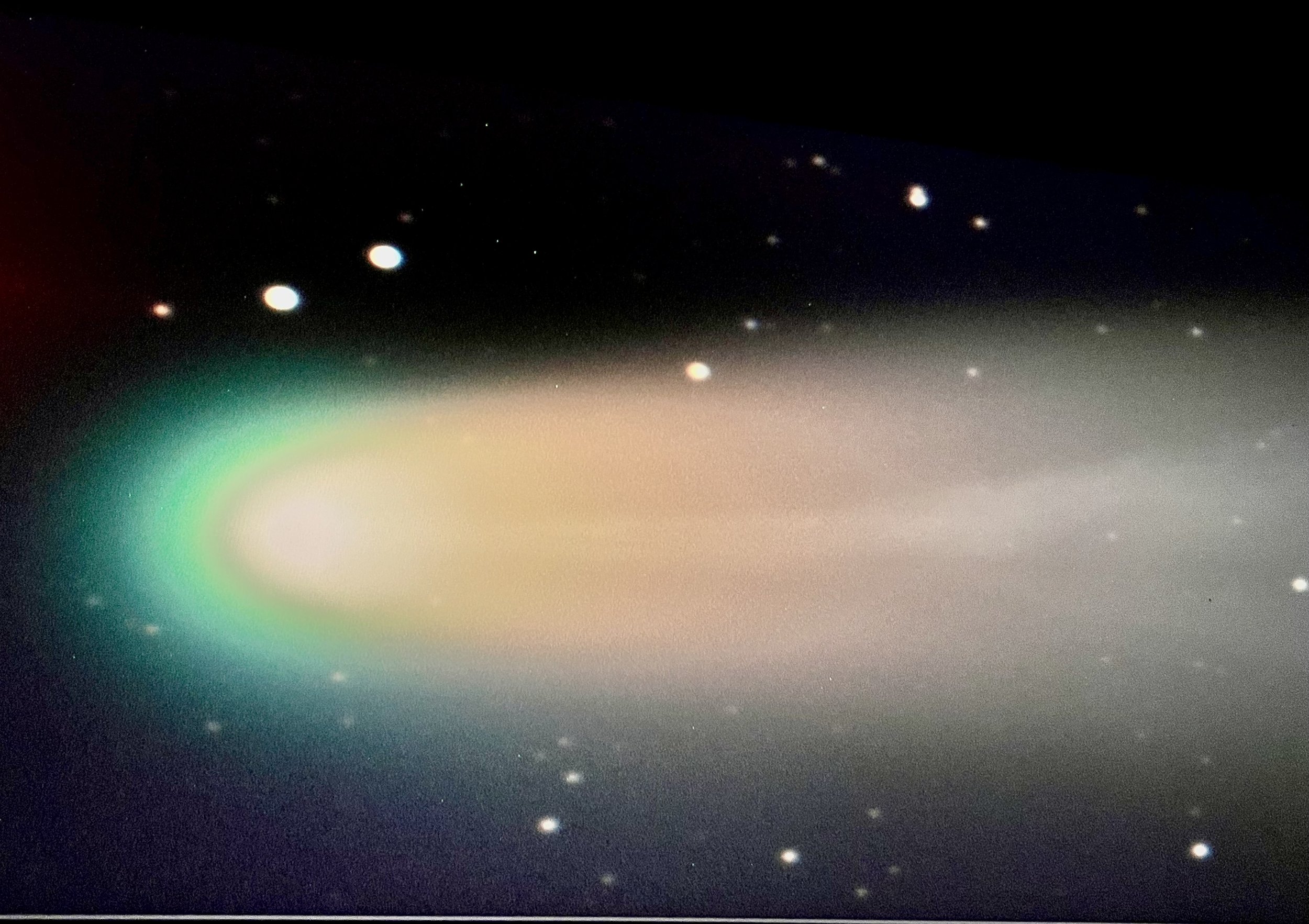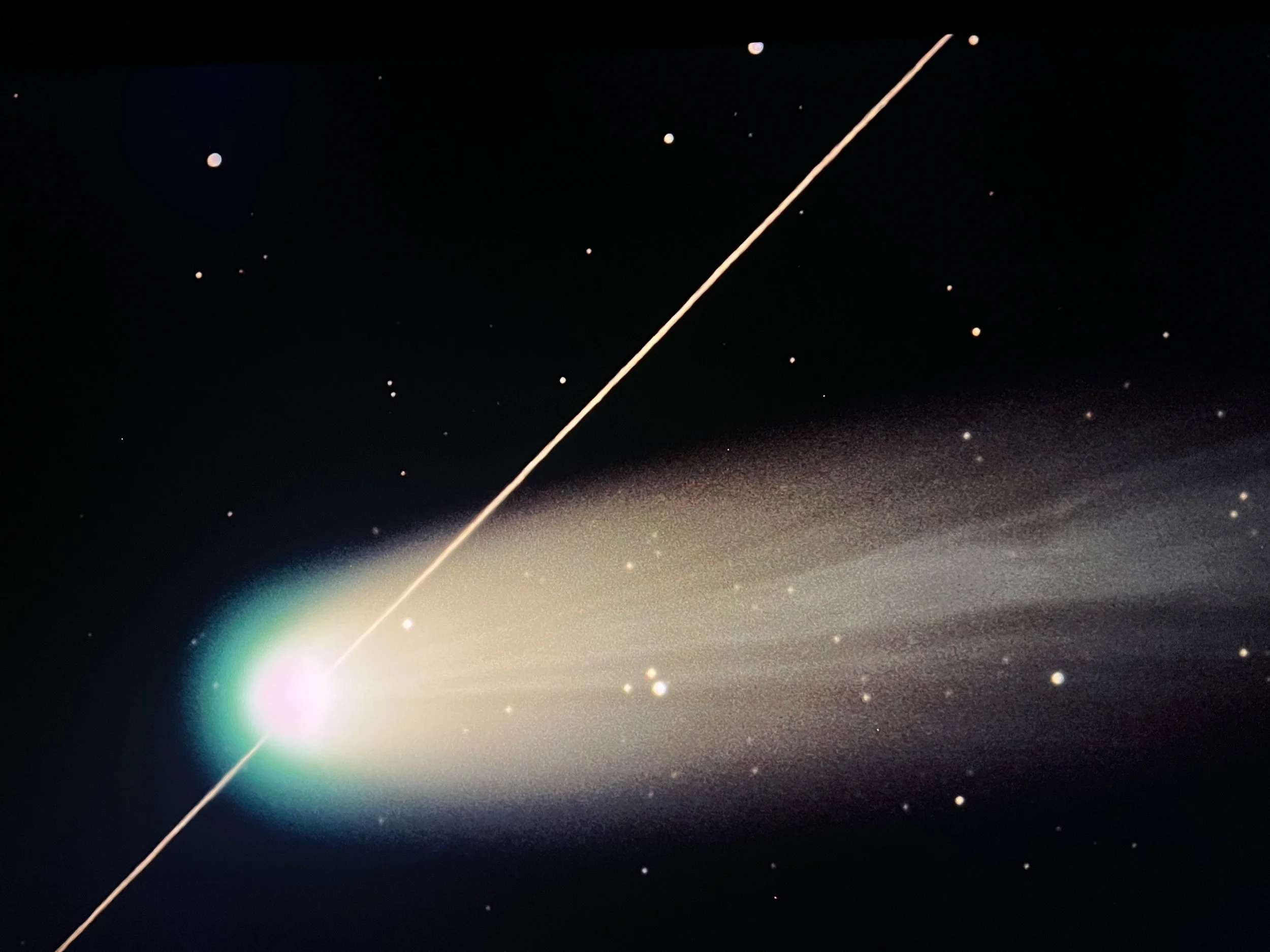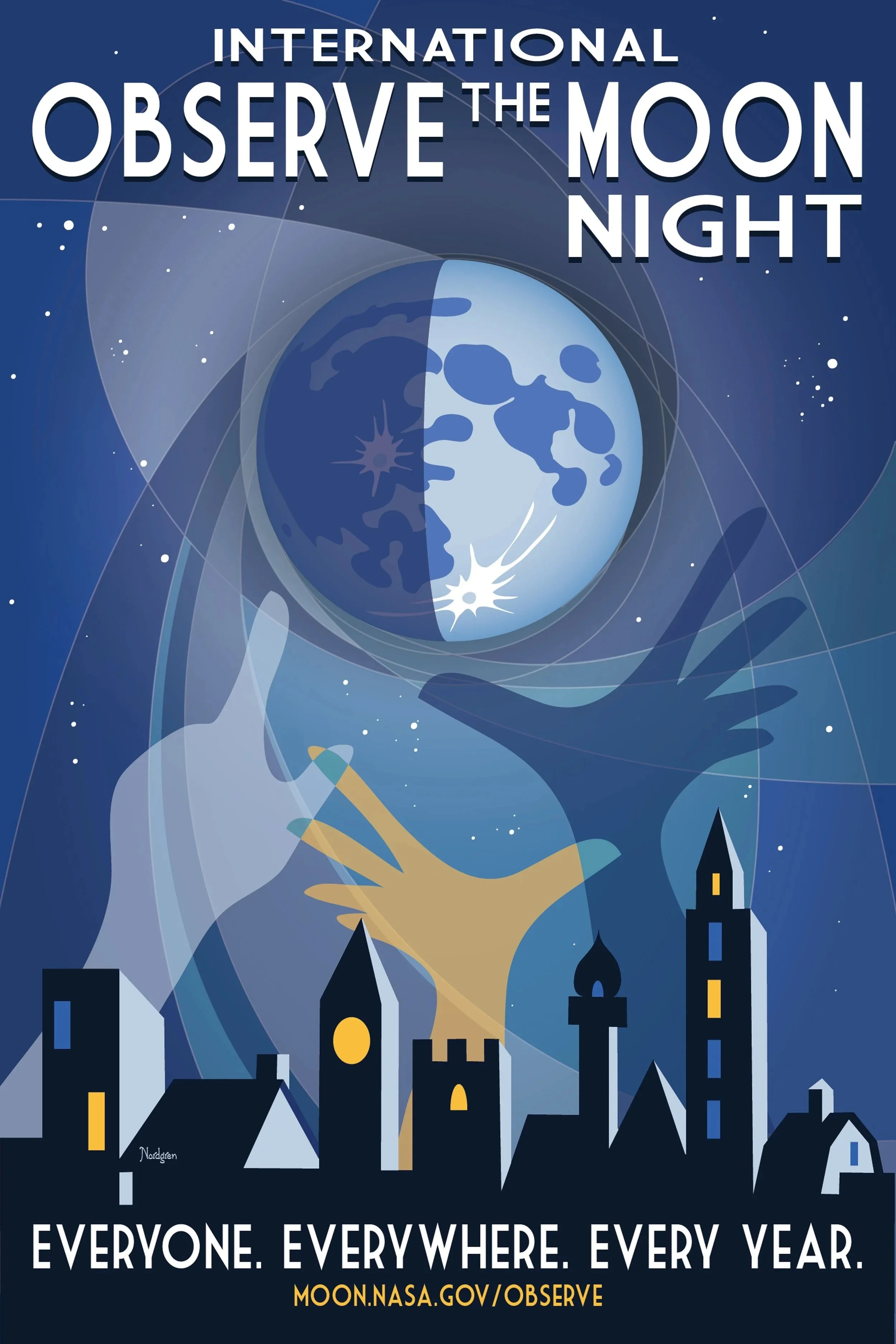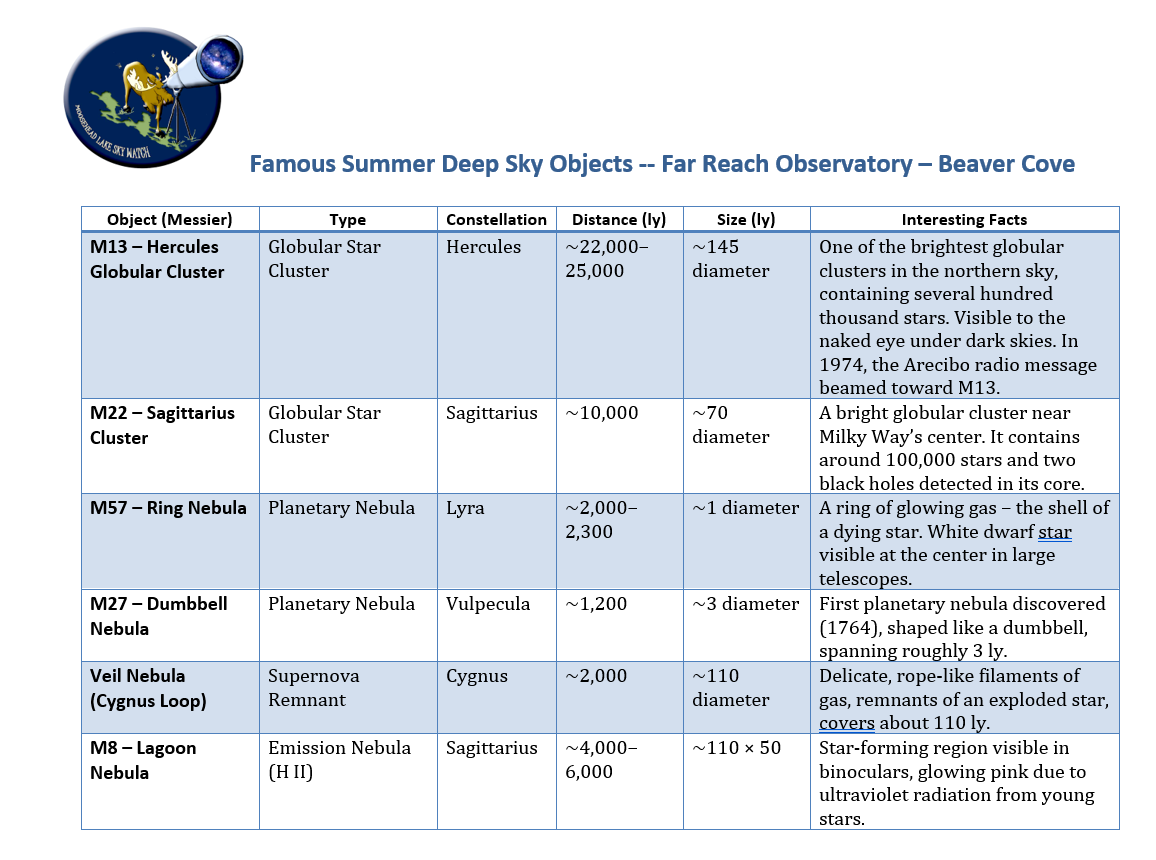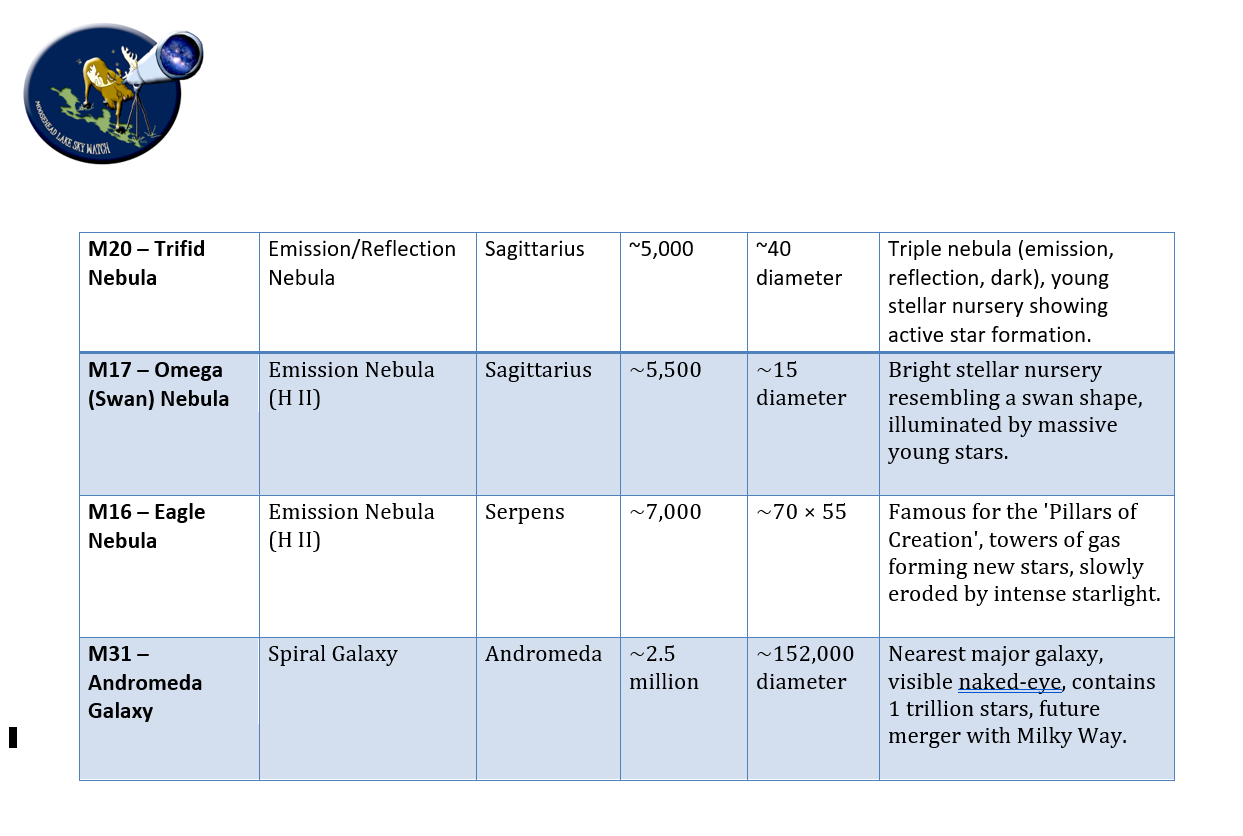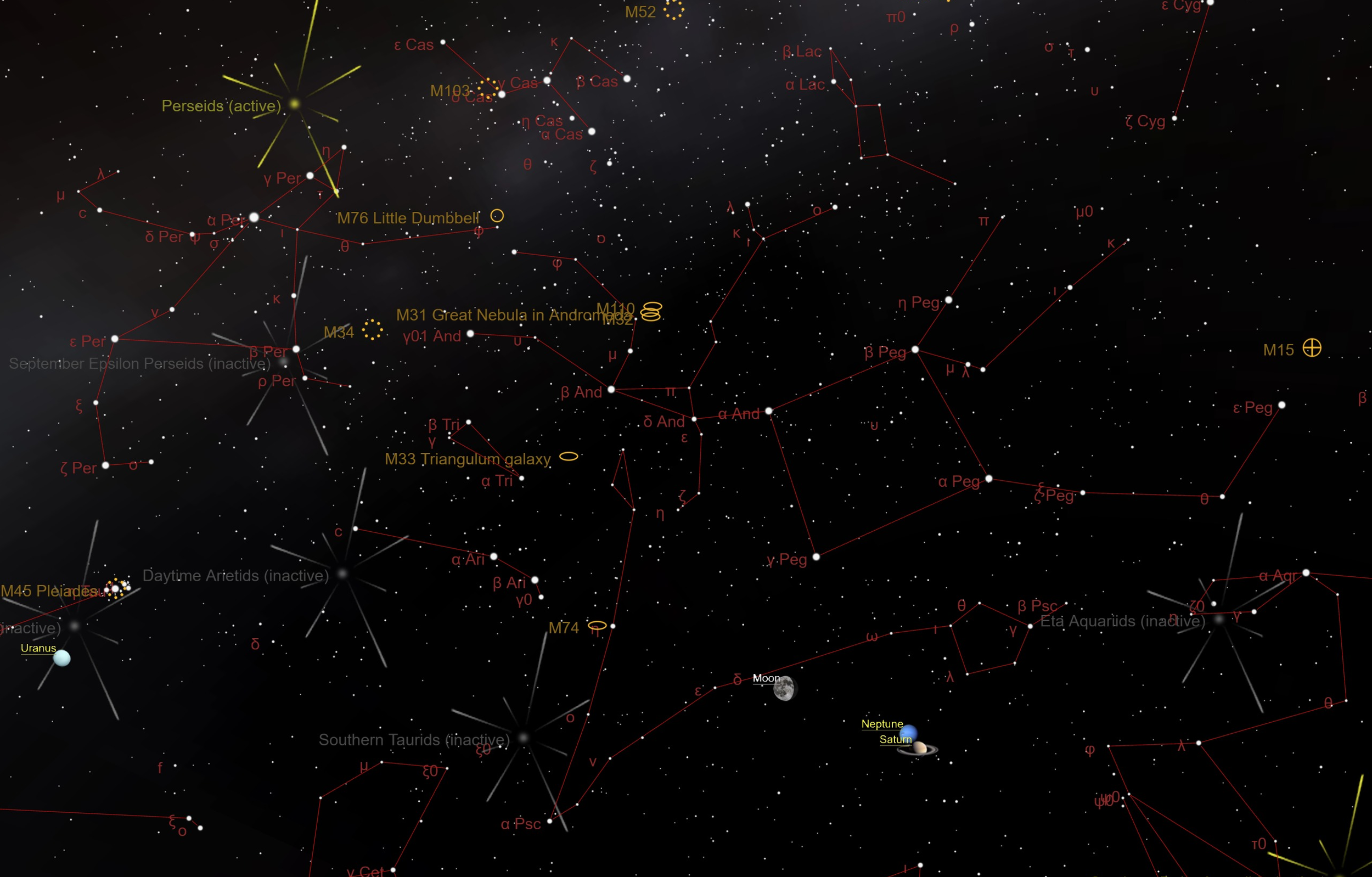
Winter Programming Announcements
Winter at Moosehead Lake Sky Watch is magnificent for stargazing. The stars are brilliant in the cold Maine night, and there are many hours in the early evening to enjoy the stunning constellations of Winter. Orion is a trove of unique and beautiful objects from the galactic nursery of M42 to the shadowy interstellar gases of the Horsehead Nebula.
Stay tuned for announcements on our winter festivities like Sleds, Spice, and Stars as an opportunity to sled into Fra Reach Observatory and enjoy spiced beverages under the darkest skies in the East.
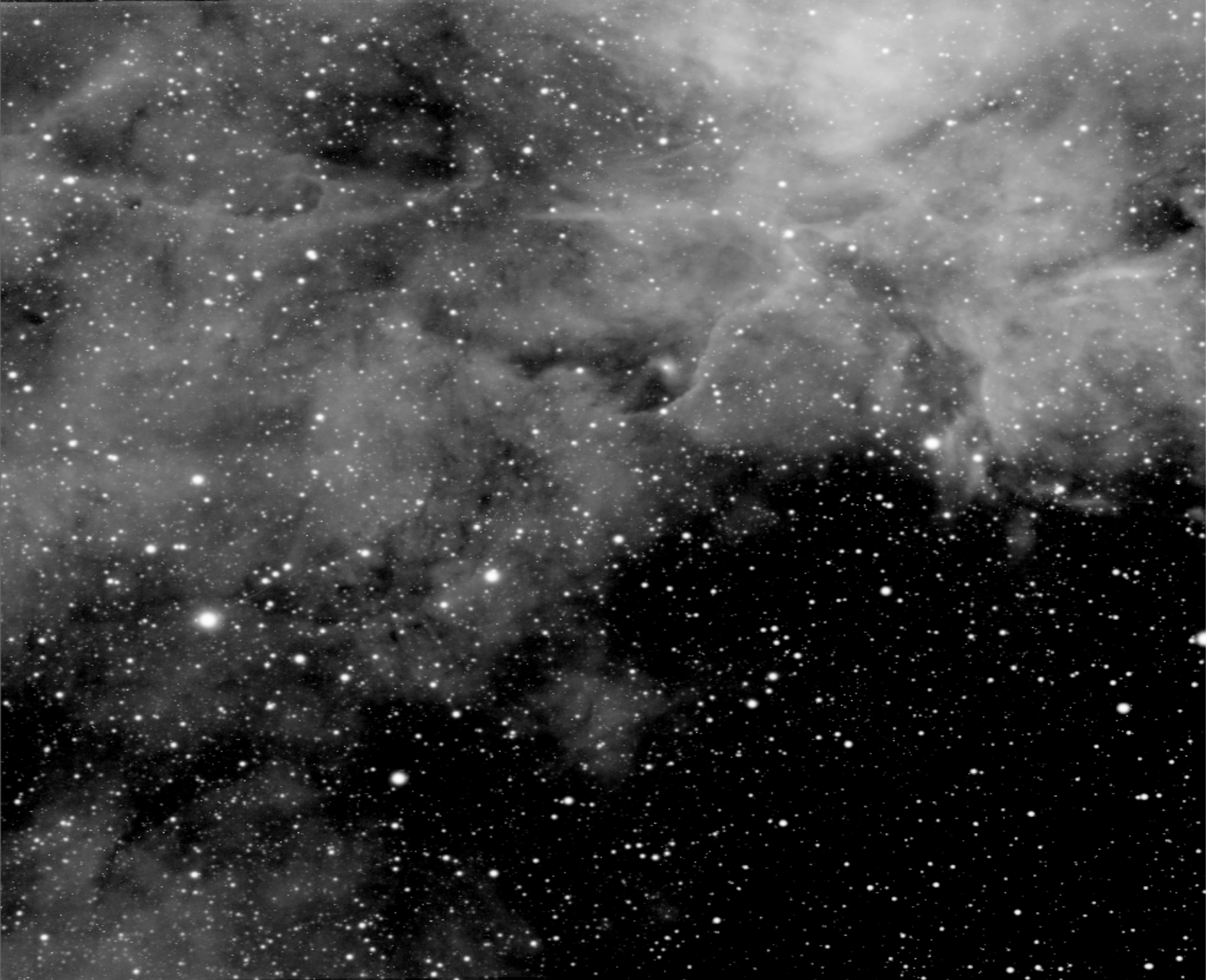
Past Public Events
July 26 (27) — Go Interstellar with 10 Famous Objects!
July 31 and August 1 — First Quarter Fun!
August 12 pm/13 am— Perseids and 31/ATLAS - Comet or Alien Tech?
August 16 - Open House Tours and Sun Fun
August 22 and 23 — Wonders of the Winged Horse and Galaxy Nights!
September 20 and 21 — September Wonders Under the New Moon
October 4 — NASA’s International Observe the Moon Night
October 17 — October’s Dark Sky Magic
November 17 — Exploring the Great Perseus Galaxy Cluster
Comet Lemmon
Moosehead Lake Sky Watch - October 2025
When a comet approaches the inner Solar System, solar radiation and the solar wind (a supersonic plasma flow of protons and electrons from the Sun) interact with the neutral gas and dust escaping from the comet’s nucleus.
This interaction produces several distinct plasma boundaries: the Bow Shock (Compression Region) ahead of the nucleus, up to 10⁴–10⁵ km where the solar wind is abruptly slowed, compressed, and heated; the Coma (Neutral Gas Cloud) which is c entered on nucleus, extending 10⁵–10⁶ km and dominated by sublimated volatiles (H₂O, CO₂, CO); the Ionopause just outside the ionized inner coma as the boundary between solar-wind plasma and cometary ions; and the Nucleus~1–10 km solid body and source of all gas and dust.
The solar wind moves at ~400–800 km/s. When it encounters the outflowing neutral coma (expanding at only ~1 km/s), ionization processes (photoionization, charge exchange, electron impact) generate a population of slow-moving cometary ions.
These new ions are “picked up” by the solar wind's magnetic field, creating a drag on the solar wind and building up a region of compressed, heated plasma — this is the bow shock, or compression region. Visually, this compression area can appear as a faint, diffuse bright arc or condensation just sunward of the nucleus, sometimes detached from the main coma.
This brightness can have several contributions:
Enhanced Dust Density – Dust grains ejected sunward are briefly slowed by solar radiation pressure before being swept back; this can produce a sunward “spike” or bright rim.
Fluorescent Emission from Ionized Gas – Ion species like CO⁺, CN, C₂, H₂O⁺ fluoresce in the optical/near-UV, and where density and ionization rates peak (the compression region), brightness increases.
Forward Scattering of Sunlight – For Earth-based observers at small phase angles (Sun–Comet–Earth < 30°), sunlight scattering by dust grains is strongly forward-peaked, intensifying brightness in the sunward direction.
Serendipity!! While imaging Comet Lemmon on October 29, 2005, we captured a satellite passing in front of the nucleus of the comet.
Where can you spot the Perseids?
Look up — these bright meteors streak across the sky, originating from the constellation Perseus.
A GPT GUIDE:
Every summer, skywatchers look forward to the Perseid meteor shower, one of the most popular and plentiful meteor displays of the year. This guide will explore the origins and history of the Perseids, share fun facts about these dazzling meteors, and offer tips for when and how to watch the 2025 Perseid meteor shower for an unforgettable family stargazing experience.
Origins: From Comet Swift-Tuttle to “Shooting Stars”
The Perseid meteors are tiny pieces of a comet! Comet 109P/Swift-Tuttle is the parent comet of the Perseid shower. Every 133 years, this icy comet swings through the inner solar system and leaves behind a trail of dust and pebbles. When Earth passes through this stream of debris each year, bits of comet dust hit our atmosphere and burn up, creating the bright streaks we call meteors. In fact, every Perseid meteor is a little piece of Comet Swift-Tuttle catching fire in the sky.
Comet Swift-Tuttle was discovered in 1862 by astronomers Lewis Swift and Horace Tuttle. A few years later, in 1865, Italian astronomer Giovanni Schiaparelli realized that this comet was the source of the Perseid meteors. Swift-Tuttle is a big comet – its nucleus is about 16 miles (26 km) across, roughly twice the size of the asteroid that may have wiped out the dinosaurs. It last visited the inner solar system in 1992 and won’t return again until the year 2126.
Why are they called “Perseids”? The meteors seem to stream from a spot in the sky near the constellation Perseus, the hero of Greek mythology. This spot is called the radiant of the shower. By chance, Perseus lies in the direction from which the comet’s debris approaches Earth. So, when you see a Perseid meteor, if you trace its path backward it appears to come from Perseus – hence the name. (The constellation isn’t the actual source, but it’s a handy way to know which shower you’re viewing. The connection to Perseus also inspired some legendary storytelling: in Greek myth, Perseus was said to be born when Zeus visited his mother Danaë in a magical “shower of gold,” and some have poetically compared that tale to the golden streaks of the Perseid meteor shower.
Perseids in History
The Perseid meteor shower has been enchanting humans for nearly 2000 years. The earliest known record comes from ancient China: observers in A.D. 36 reported seeing “more than 100 meteors” one late summer morning. This suggests people have noticed the Perseids for a very long time. In other parts of the world, the Perseids became steeped in legend and tradition. During the Middle Ages in Europe, the shower arrived around the annual feast day of Saint Lawrence (August 10). Europeans began calling the meteors the “Tears of St. Lawrence,” imagining they were fiery tears shed by the martyred saint each year (Read more at nationalgeographic.comnationalgeographic.com). For centuries, Catholics in England, Germany, and elsewhere would observe the early August meteors and think of St. Lawrence’s tears falling from heaven..
By the 1830s, astronomers started paying serious attention to the Perseids. Several astronomers independently “discovered” the Perseid meteor shower in the 1830s, finally recognizing it as a yearly event in early August. One early astronomy report in 1839 even acknowledged that ordinary people had long been aware of the August meteors, thanks to the folklore of St. Lawrence’s tears. Since then, the Perseids have been observed every year like clockwork. It is now considered the best meteor shower of the year by many, thanks to its high meteor counts and summertime warmth that makes viewing comfortable. Generation after generation has gazed up at the Perseids each August, making wishes on “shooting stars” and marveling at the universe putting on a nightly show.
Fun Facts About Perseid Meteors
They’re Incredibly Fast: Perseid meteors slam into Earth’s atmosphere at about 37 miles per second (59 km/s). That’s roughly 133,000 miles per hour! These space pebbles move 500 times faster than a speeding jet, which is why they burn up in a flash of light. The high speed causes the air in front of the meteoroid to compress and heat up to thousands of degrees, vaporizing the tiny rock in an instant.
Tiny Specks of Comet Dust: Most Perseids are no bigger than a grain of sand. It’s amazing to think such a tiny speck can create a bright streak across the sky. Some larger Perseid bits might be pea-sized or marble-sized. Almost none of this debris hits the ground – it completely burns up high in the atmosphere. (If a meteor does survive and land on Earth, then it’s called a meteorite, but that’s very unlikely with Perseids.)
“Shooting Stars” : We call them shooting stars, but Perseid meteors are not actually stars at all – just little rocks and dust. They glow because they’re burning up as they zip through the atmosphere. For a few seconds they shine bright like stars, tricking our eyes. This is why people long ago imagined falling stars, but now we know it’s comet dust making these celestial streaksscience.nasa.gov. So when you wish upon a shooting star, you’re really wishing on a tiny bit of comet!
Colorful Fireworks in the Sky: Perseids often leave long glowing trails of light as they streak by, sometimes with hints of color. You might catch a meteor with a greenish or bluish glow – that’s caused by elements like magnesium and copper in the meteoroid, or by the air glowing as the meteor superheats it. Other meteors may flash orange or white. The Perseids are also known for the occasional fireball: an extra bright meteor that can blaze brighter than Venus in the sky. These fireballs come from larger chunks of comet material and can even leave behind glowing “smoke” trails that linger for a few moments.
Lots of Meteors to See: Under ideal dark skies with no moon, the Perseids can produce up to 50–100 meteors per hour at the peak. That’s at least one per minute on average, though they tend to come in spurts. In typical conditions, you might see a meteor every few minutes – plenty of wishes to go around. The Perseids are one of the most plentiful showers of the yearscience.nasa.gov, which is why so many people love watching them again and again.
How to Watch the Perseids in 2025
Mark Your Calendar for the Peak: the best show will be on the peak nights around August 11–13. Astronomers predict the highest rates of meteors will occur in the pre-dawn hours of August 12 and August 13. Late night August 11 into the morning of August 12, and late-night August 12 into the morning of August 13, will likely offer the most “shooting stars.” Plan to watch on those dates if weather permits (and as a backup, the night of August 13-14 could still have decent activity). Keep in mind the Perseids gradually ramp up to the peak and then drop off quickly afterward, so those peak nights are special.
Moonlight Alert – Dark Skies Are Key: This year, a bright waning gibbous moon will share the sky during the Perseid peak. In fact, on the peak night the Moon will be about 84% full and rise not long before midnight. That means moonlight will wash out faint meteors. Don’t worry – you can still see the brighter Perseids, but you’ll want to avoid looking at the Moon. If possible, observe before moonrise or after the moon sets; the waning moon sets a bit after 3 a.m. local time. For most, the best strategy is to find the darkest spot you can, away from city lights, and maybe position yourself so that a tree or building blocks the Moon. The darker your sky, the more stars and meteors you’ll see. If the Moon is up, try using your hand or an object to shield your eyes from its glare. Even with moonlight, many Perseids are bright, so you might still catch plenty of “shooting stars” – just not as many faint ones.
Best Time of Night: You might spot a few Perseids in the evening, but late night to dawn is when they really shine. That’s because the constellation Perseus (where the meteors appear to radiate from) rises higher in the sky as the night goes on. After midnight, the Earth is facing more directly into the meteor stream, so the rates go up. The most meteors usually flash in the dark hours just before dawn (say, 3–5 a.m. local time) when Perseus is high overhead. If your family can stay up late (or wake up very early), those hours will reward you with more meteors. However, if that’s too late for young kids, even stepping out around 10 or 11 p.m. can be fun – you might catch a few early Perseids crawling across the sky. Just know that the meteor counts increase as the night grows deeper.
Where to Look: The great thing about meteor showers is you don’t need a telescope or binoculars – just your eyes. In fact, the wider you can see the sky, the better. Find a spot with an open view of the heavens. Lie back on a blanket, sleeping bag, or reclining chair so you can comfortably gaze straight up. Meteors can appear in any part of the sky, so a wide view helps. If you trace their paths, they all seem to come from the northeast (from Perseus) when the radiant is rising, but you’ll see streaks everywhere above you. Pro tip: Face away from the Moon (if it’s up) to keep your vision adjusted to the dark. After about 20-30 minutes in darkness, your eyes will adapt and you’ll start to see more stars and faint meteors – so be patient. And try to avoid looking at your phone or bright lights while watching; use a red flashlight if you need light, since red light preserves night vision.
Bring the Right Gear: August nights are generally warm, but late at night it can get chilly, especially if you’re in a rural area. Bring blankets or sleeping bags to lie on (or to bundle up in) so everyone stays comfortable. A reclining lawn chair can also work well. Pack a thermos of hot cocoa or warm drinks, and some snacks – stargazing can be hungry work! Don’t forget bug spray if you’re in mosquito country. It’s also handy to have a star chart or stargazing app (with night mode) so you can point out other night sky sights to the kids while waiting for meteors. In 2025, for example, Venus and Jupiter will be shining together in the east before sunrise during the Perseid peak mornings, putting on a planetary show of their own. You can have fun spotting planets or constellations in between meteor sightings.
Make it an Adventure: Watching the Perseids can be an exciting late-night campout right in your backyard or at a safe dark location. Make it special for kids: get them involved by bringing counting clickers or simply pen and paper to tally how many meteors each person sees. You can have a friendly competition or work together to count 100 shooting stars as a family. Each time someone spots one, they can call out “Got one!” – laughter and excitement guaranteed. Another idea is to make a wish on each shooting star you see (a classic tradition). This keeps everyone engaged, waiting for that next streak of light. To keep children entertained during slower periods, try storytelling under the stars. You could share the myth of Perseus – the brave hero who the constellation is named after – or even the tale of why people once called these meteors the tears of a saint. Encourage kids to come up with their own creative explanations for what meteors..
Safety and Comfort: If you go to a remote dark site, bring a flashlight (with red light mode if possible) to navigate safely. Ensure everyone has layered clothing; even in summer, nights can cool down enough that a hoodie or jacket helps.
Finally, enjoy the show! The Perseid meteor shower is a magical natural event that reminds us of our connection to the cosmos. Whether you’re an adult marveling at the science of comet dust hitting our atmosphere, or a child simply delighting in each “star” that zooms by, the experience can inspire wonder. So on those August nights, settle in with your family, gaze up at the twinkling sky, and get ready to “ooh!” and “aah!” at each streak of light. The universe’s summer fireworks are about to begin – make a wish and have fun meteor-spotting!
Perseid Meteor Shower
Latest Research Highlights on Nature, Composition, and Features (2020–2025)
1. **Parent Body & Resonance** — The Perseids originate from comet 109P/Swift–Tuttle (26 km diameter, ~133-year orbit) in a 1:11 resonance with Jupiter, sustaining high annual activity.
2. **Fast Entry Speed** — Perseids enter Earth's atmosphere at ~59 km/s, producing high-temperature spectral lines like Ca II, Mg II, and Si II.
3. **Chondritic Silicate Composition** — Typical meteoroid spectra show Mg I, Na I, Fe I multiplets; Na depletion is common, suggesting thermal alteration.
4. **Sodium Volatility** — Na/Mg ratios reflect the meteoroid's thermal history, with lower values linked to closer perihelion passages.
5. **Hydrogen Emission** — Hα lines are often detected, typical for high-speed cometary meteors, confirming volatile-rich composition.
6.**Low Density & High Porosity** — Modeled bulk densities of ~800–1200 kg/m³ and ~60% porosity indicate fragile aggregate structure.
7. **Ablation & Fragmentation** — Perseids fragment easily compared to showers like the Taurids, reducing the chance of meteorite survival.
8. **Persistent Trains** — Bright Perseids often leave chemiluminescent trains lasting seconds to minutes, especially in the upper atmosphere.
9. **Fine Filament Structure** — Multi-peak maxima occur as Earth passes through multiple dust filaments from separate comet passages.
10. **Cross-Planetary Signatures** — Perseid dust affects the lunar exosphere and is modeled to intersect other planets' orbits, validating stream structure.
3I/ATLAS: The Third Interstellar Visitor
Discovered on July 1, 2025 by the ATLAS telescope in Chile, 3I/ATLAS is the third interstellar object confirmed to visit our solar system given it moves along a highly hyperbolic trajectory at speeds exceeding 210,000 km/h, confirming its origin outside our solar neighborhood. Currently its estimated to be between a few kilometers down to under 1 km in nucleus size, 3I/ATLAS is surrounded by a visible coma.
The Alien Probe Hypothesis
On July 16, 2025, Harvard astrophysicist Avi Loeb, together with colleagues, published a speculative paper proposing that 3I/ATLAS could be extraterrestrial in origin. Their case cites its apparent size, trajectory aligned with the Solar System plane, and lack of immediate spectral signatures. Some media reports have sensationalized this, suggesting the object might be a hostile alien spy probe possibly maneuvering past Venus, Mars, and Jupiter, with its October perihelion potentially hiding it from Earth-based observation. Observations consistently show 3I/ATLAS exhibiting normal comet-like behavior—coma, dust tail, water vapor emissions—even from significant distances.
RECAP — Fall 2024 Event — Comet Time
32 Visitors saw Comet Tsuchinshan-ATLAS C/2023 A3 in the southwest after SUNSET using binoculars and learned how to use their phone camera to capture an image before going into the observatory for a closer look.
Photo credit: David Young Oct 26 2024
The picture above comes from an iPhone app known as Star Walk 2. If you have a passion for stargazing or simply enjoy learning about the wonders of the night sky, be sure to check out this fantastic app for an enhanced stargazing experience. The picture below was taken with an iPhone on October 15, 2024
Photo credit: David Young
We’ve Always Been Fascinated By Comets — A Few Reflections — DFY+
The study of comet sightings across ancient civilizations, from Babylon to the Americas, highlights a universal human curiosity about events in the night sky. Though interpretations and records of these events differ, they all reveal a shared quest to understand and interpret the unexpected. For the Indigenous peoples of the Americas, comets were not just astronomical phenomena; they were integral to the stories, rituals, and beliefs that shaped their understanding of the universe and their place within it.
Comets have captivated humanity for millennia, leaving their mark on the cultural records of civilizations worldwide. While written records from ancient China, Babylon, and other Old-World societies are well-documented, evidence from the Americas is often subtler. Here, knowledge of the skies was transmitted through oral traditions, petroglyphs, pictographs, and archaeological evidence rather than formal texts. These sources offer valuable insights into how Indigenous peoples of the Americas observed and interpreted celestial events long before European contact.
Petroglyphs of the Ancestral Puebloans
One of the most striking examples of early comet observations in North America comes from the Ancestral Puebloans (often referred to as the Anasazi) of the American Southwest. They left behind petroglyphs—stone carvings—that have been interpreted as depictions of celestial events. A notable example is a petroglyph near Chaco Canyon in present-day New Mexico, a significant cultural and astronomical center for the Ancestral Puebloans. This carving features a star-like symbol with a long, curved tail, reminiscent of a bright comet. Some scholars suggest it may depict Halley’s Comet during its 1066 CE appearance, which was also famously portrayed in the Bayeux Tapestry in Europe. If accurate, this interpretation indicates a fascination in celestial events among the Ancestral Puebloans, who likely incorporated such observations into their spiritual and cultural practices.
The Maya and the Dresden Codex
Further south, the Maya civilization of Central America provides another rich source of astronomical knowledge. Renowned for their advanced understanding of the cosmos, the Maya meticulously recorded celestial movements, including those of planets, stars, and other phenomena. Their knowledge is preserved in codices—folded bark-paper books with astronomical calculations and observations. The Dresden Codex, one of the few surviving pre-Columbian texts, contains detailed astronomical data, such as eclipse predictions and planetary cycles, alongside references to "smoking stars," interpreted by some scholars as comets. Although the precise dates of these observations remain uncertain, the Maya’s ability to track and record celestial events suggests that they monitored and possibly predicted comet appearances. Comets may have been potent symbols or omens within their cosmological framework, shaping rituals and cultural beliefs.
Inca Traditions and Celestial Observations
In South America, the Inca and other Andean cultures closely observed the skies, integrating celestial events into their cosmological worldview. Unlike the Maya, the Inca left few written records, but Spanish chroniclers in the 16th century documented oral traditions that included references to unusual sky events. Felipe Guaman Poma de Ayala, a Quechua nobleman, recorded descriptions of bright objects in the sky that some modern scholars interpret as comets. Although these accounts were written decades after the events, they provide valuable insights into Inca interpretations of celestial phenomena. For the Inca, comets were often seen as divine messages, with implications for agriculture, leadership, and societal well-being.
Cultural Significance of Comets in Indigenous Astronomy
Unlike some European and Asian traditions, where comets were meticulously documented as part of systematic astronomical studies, Indigenous observations in the Americas often held spiritual or practical significance. Comets could be seen as omens, heralding changes in leadership, challenging times, or messages from the spiritual realm.
For instance, the Ancestral Puebloans may have integrated comet observations into their ceremonial cycles or used them as time markers. The Maya likely perceived comets as part of the cyclical nature of time, fitting them into their complex cosmology that linked the heavens, the underworld, and the human realm. For the Inca, the sky was a living tapestry, where events like comet appearances were interpreted within a broader mythological context, guiding rituals and agricultural practices.
Interpreting evidence of comet sightings from ancient Indigenous cultures is not without challenges. Unlike written records that specify dates and details, interpretations of petroglyphs and oral traditions often depend on context and symbolism. Nonetheless, these records reveal a deep engagement with the cosmos. The Indigenous peoples of the Americas were astute observers of the sky, and their records demonstrate a profound connection to celestial phenomena. Whether through stone carvings or oral histories, their observations of comets, such as the "smoking stars" of the Maya, provide a window into how these ancient cultures understood and revered the heavens.
Comets in Recent History: Cosmic Wonders and Human Events — DFY+
For millennia, comets have fascinated and perplexed humanity. Often appearing without warning, these bright, tail-bearing celestial objects have been seen as omens of change, doom, or divine intervention. Whether viewed through the lens of superstition or scientific curiosity, comets have left their mark on the human imagination. Throughout history, significant comet appearances have coincided with major global events, shaping how we interpret and remember both the cosmic visitors and the moments of history that surrounded them. Let’s journey through time, exploring some of the most famous comet sightings and the important historical events that occurred around the same time.
Halley’s Comet in 1066: A Harbinger of Change
Perhaps the most famous of all comets, Halley’s Comet makes an appearance every 75-76 years. One of its most historically significant showings occurred in 1066, during a period of monumental upheaval in England. The bright comet was seen as an ominous sign by King Harold II, the last Anglo-Saxon king of England. Soon after, he was defeated at the Battle of Hastings by William the Conqueror, marking the beginning of the Norman Conquest. The comet’s dramatic appearance was later immortalized in the Bayeux Tapestry, a vivid depiction of the conquest, where it is shown blazing in the sky, capturing the imaginations of those who witnessed it and reinforcing its association with significant change.
The Great Comet of 1577: A Turning Point in Science
Fast forward to 1577, when the Great Comet of 1577 appeared in the night sky, visible for several months. This comet wasn’t just a spectacle for the average person—it became a subject of scientific study for Danish astronomer Tycho Brahe. Brahe’s careful observations helped challenge the belief that comets were atmospheric phenomena, paving the way for new understandings of astronomy. This period also saw the rise of European exploration, with figures like Francis Drake circumnavigating the globe. The study of the Great Comet of 1577 marked a turning point in the Scientific Revolution, setting the stage for Johannes Kepler’s laws of planetary motion, which would soon revolutionize humanity's understanding of the solar system.
The Great Comet of 1811: A Long-Lasting Sight During Tumultuous Times
The Great Comet of 1811 was one of the longest-lasting comet sightings on record, visible for an astounding 260 days. Its bright tail and vivid coma made it a striking presence in the sky. During this time, the world was in turmoil. In Europe, Napoleon was in the midst of his Russian campaign, which would end in disaster for his army. Meanwhile, in the United States, the New Madrid Earthquakes rocked the central part of the country, and the War of 1812 loomed on the horizon. Despite the chaos on Earth, the Great Comet remained a stable, awe-inspiring sight in the sky, serving as a reminder of the vastness and mystery of the universe in contrast to the fleeting nature of human conflicts.
The Great Comet of 1843: The Longest Tail in History
In 1843, another spectacular comet appeared—the Great Comet of 1843, part of the Kreutz Sungrazers family. This comet passed incredibly close to the Sun, developing one of the longest tails ever recorded, stretching over 2 astronomical units (more than 300 million kilometers). The comet’s appearance coincided with significant events on Earth. In China, the First Opium War was coming to an end, leading to the signing of the Treaty of Nanking, which had lasting effects on Sino-British relations. In the United States, the era of Westward Expansion was in full swing, and the telegraph was beginning to revolutionize communication, reflecting the era's rapid technological advancements.
Halley’s Comet in 1910: Panic and Progress
When Halley’s Comet made its return in 1910, it sparked widespread fear as Earth passed through the comet's tail. Some believed that the gases in the tail could poison the planet, leading to a brief period of panic. But for most, it was a time of awe and wonder at the celestial phenomenon. This comet's appearance occurred during a period of significant political and social change. The Mexican Revolution had begun, and in Europe, King Edward VII of England had just passed away, marking the end of the Edwardian era. Just a few years later, the world would be plunged into World War I, forever altering the global order.
Comet Ikeya-Seki in 1965: A Bright Light During a Dark Time
The 1960s were marked by political and social upheaval, from the Vietnam War to the Civil Rights movement. In the midst of this, the Space Race was heating up, with NASA pushing forward with missions that would ultimately land humans on the Moon. Against this backdrop, Comet Ikeya-Seki made its dramatic appearance in 1965, becoming one of the brightest comets of the 20th century. Visible even in daylight, this comet, a "sungrazer," passed very close to the Sun and left a lasting impression on those who witnessed it. At the same time, NASA was launching the Gemini missions, preparing for humanity’s first steps on another world.
Comet Shoemaker-Levy 9 in 1994: A Celestial Collision
Unlike other comets, Shoemaker-Levy 9 is remembered for its dramatic collision with Jupiter in 1994. The comet broke apart and impacted the gas giant, leaving scars on its surface visible from Earth. This event was the first time astronomers had observed an extraterrestrial collision in real time, offering valuable insights into the dynamics of the solar system. This period also marked the end of the Cold War, with nations collaborating more in space exploration. The planning for the International Space Station (ISS) was well underway, and space exploration was entering a new era of international cooperation.
Comet Hyakutake in 1996: Close Encounters and Technological Growth
Just two years later, in 1996, Comet Hyakutake passed unusually close to Earth, providing a stunning display with its long tail stretching across the sky. This close approach made it one of the most memorable comets of the decade. During this time, the world was witnessing rapid technological advancements. The World Wide Web was beginning to revolutionize communication, and Bill Clinton was re-elected as President of the United States. In space, international cooperation was increasing, laying the groundwork for future collaborative missions.
Comet Hale-Bopp in 1997: A Celestial Giant and a Tragic Cult
One of the brightest and most widely observed comets of the 20th century, Comet Hale-Bopp dominated the night sky for an unprecedented 18 months starting in 1997. Its visibility made it a favorite among astronomers and amateur stargazers alike. However, the comet also became tragically associated with the Heaven’s Gate cult, whose members believed they would ascend to an alien spacecraft following the comet.
Conclusion: Comets as Witnesses to History
From medieval omens of conquest to modern scientific breakthroughs, comets have long been intertwined with human history. These cosmic wanderers have appeared at times of great change, whether in the form of technological progress, social upheaval, or geopolitical conflict. Whether seen as messengers or simply as beautiful spectacles, comets remind us of our deep connection to the cosmos and the events that shape our lives. As humanity continues to explore the universe, comets will undoubtedly continue to captivate our imagination, linking the vastness of space with the ever-changing story of life on Earth.


